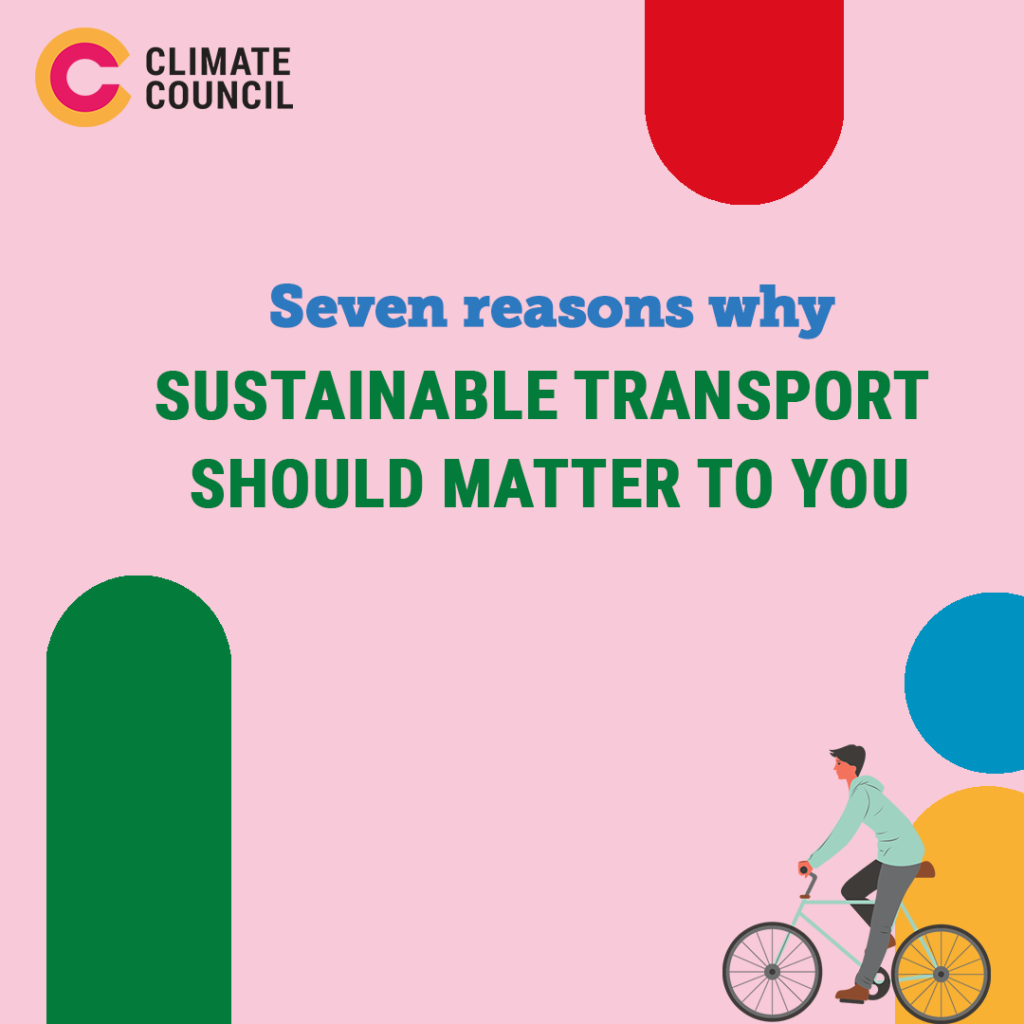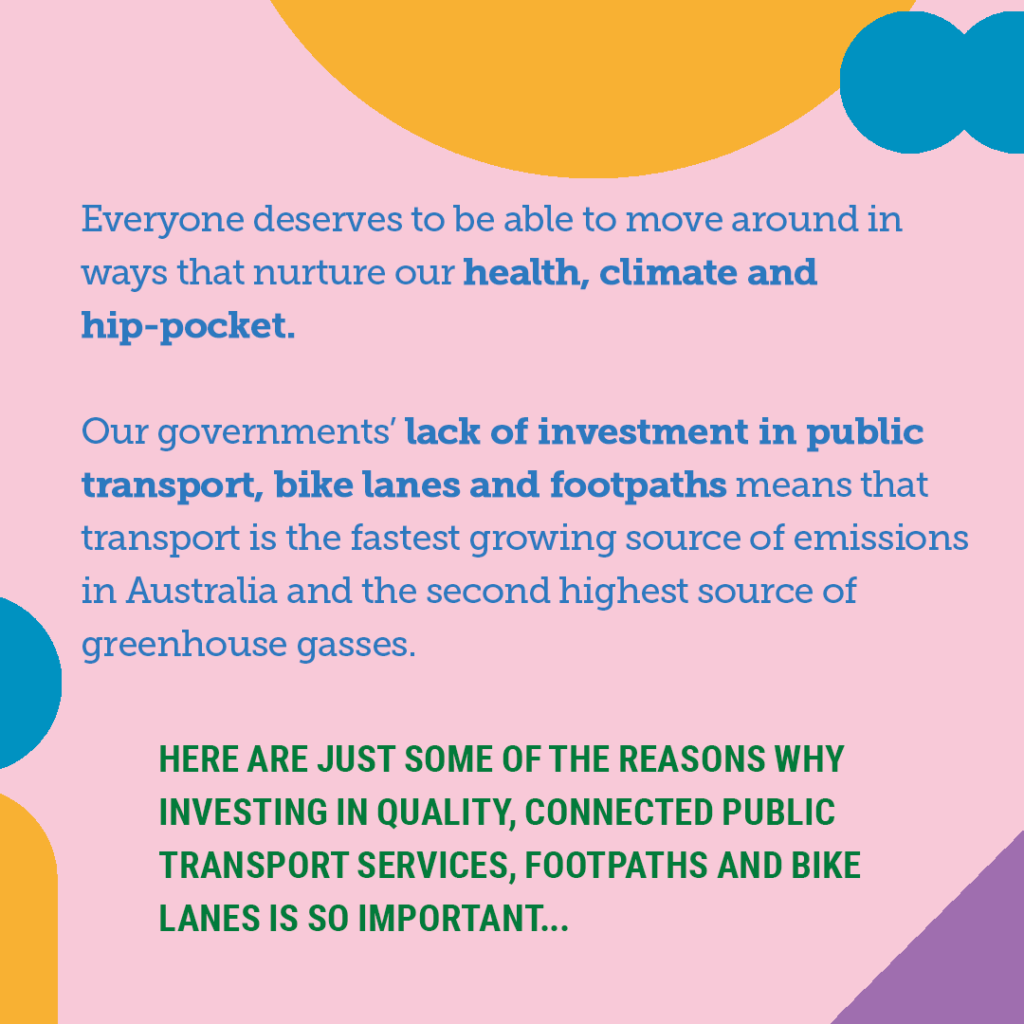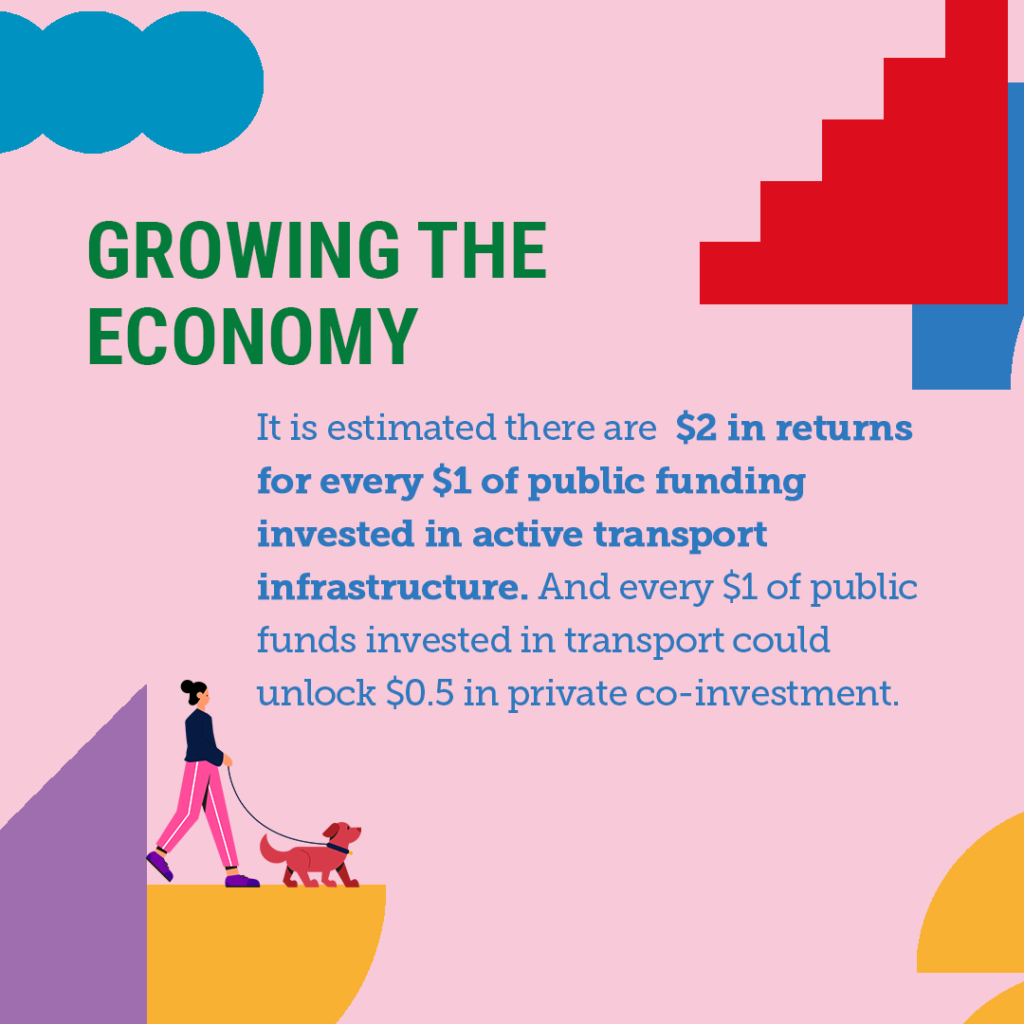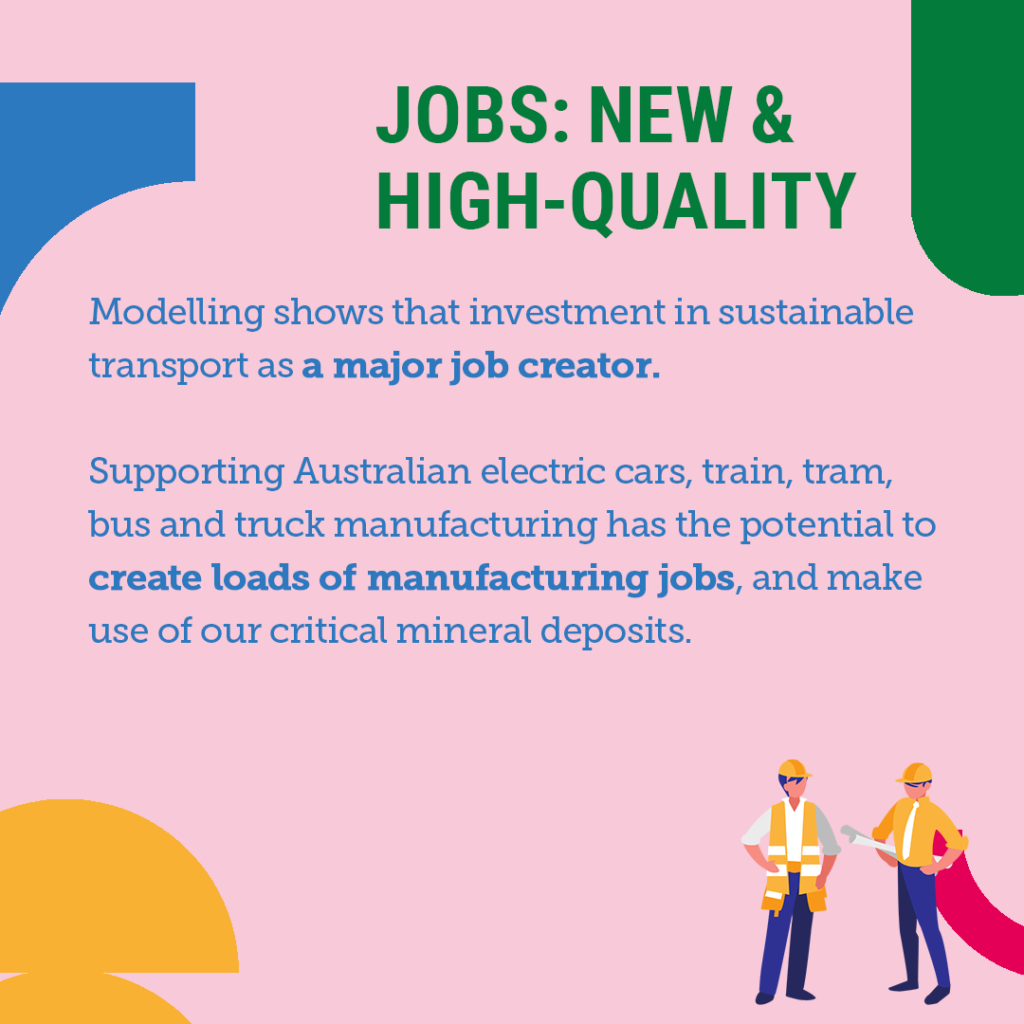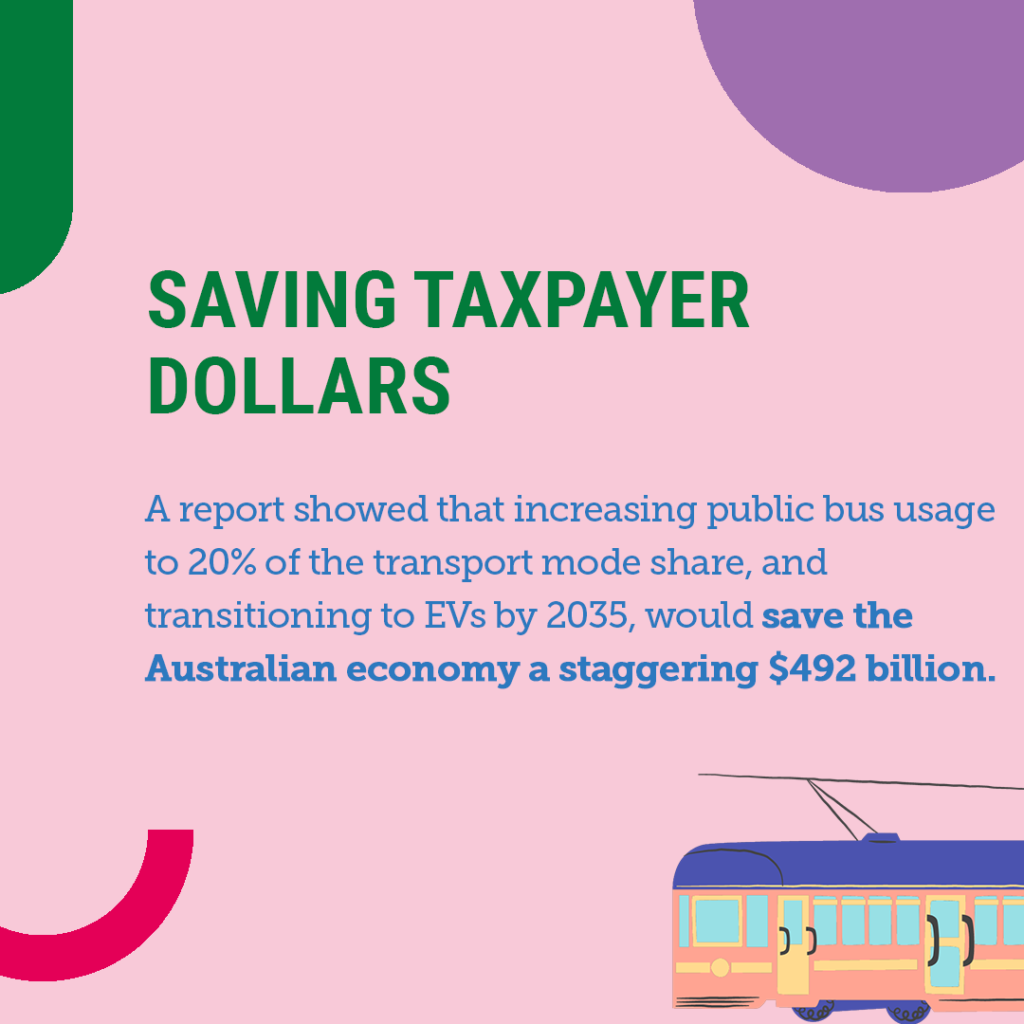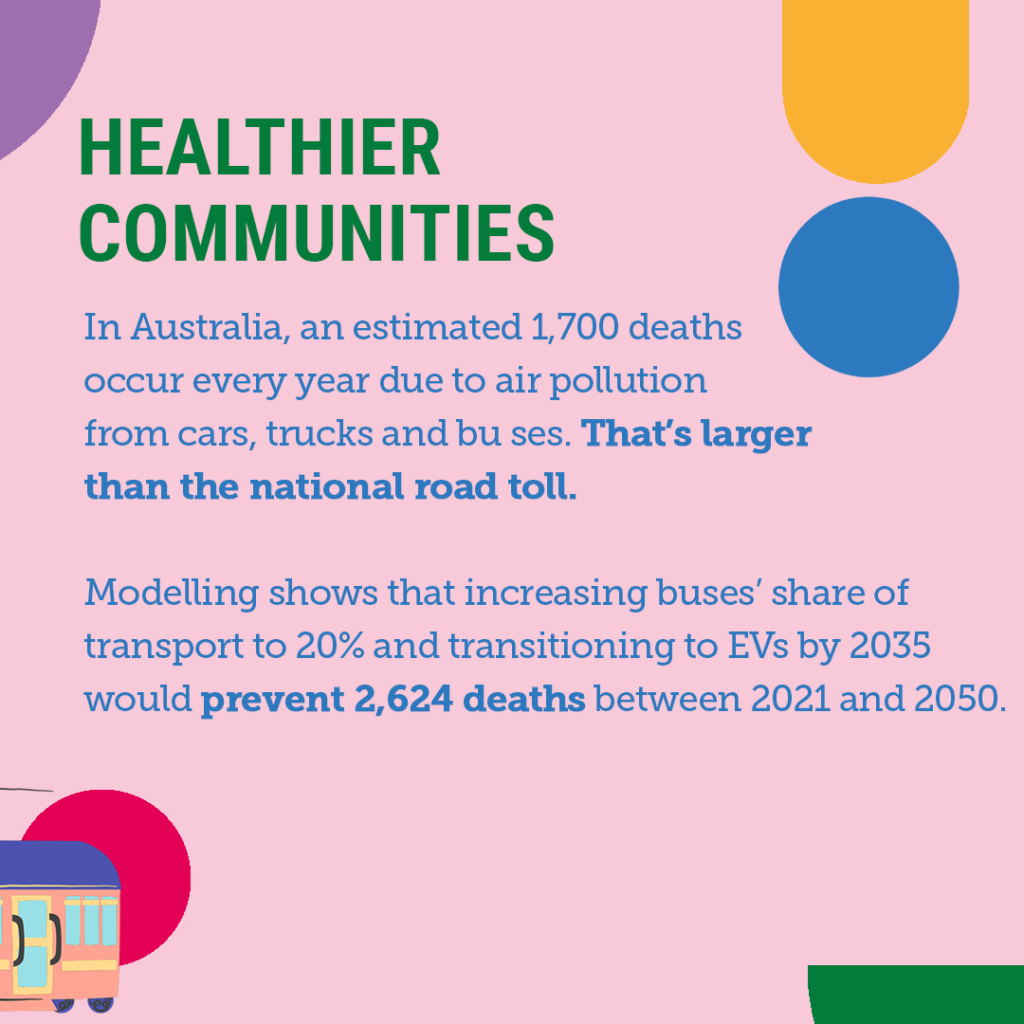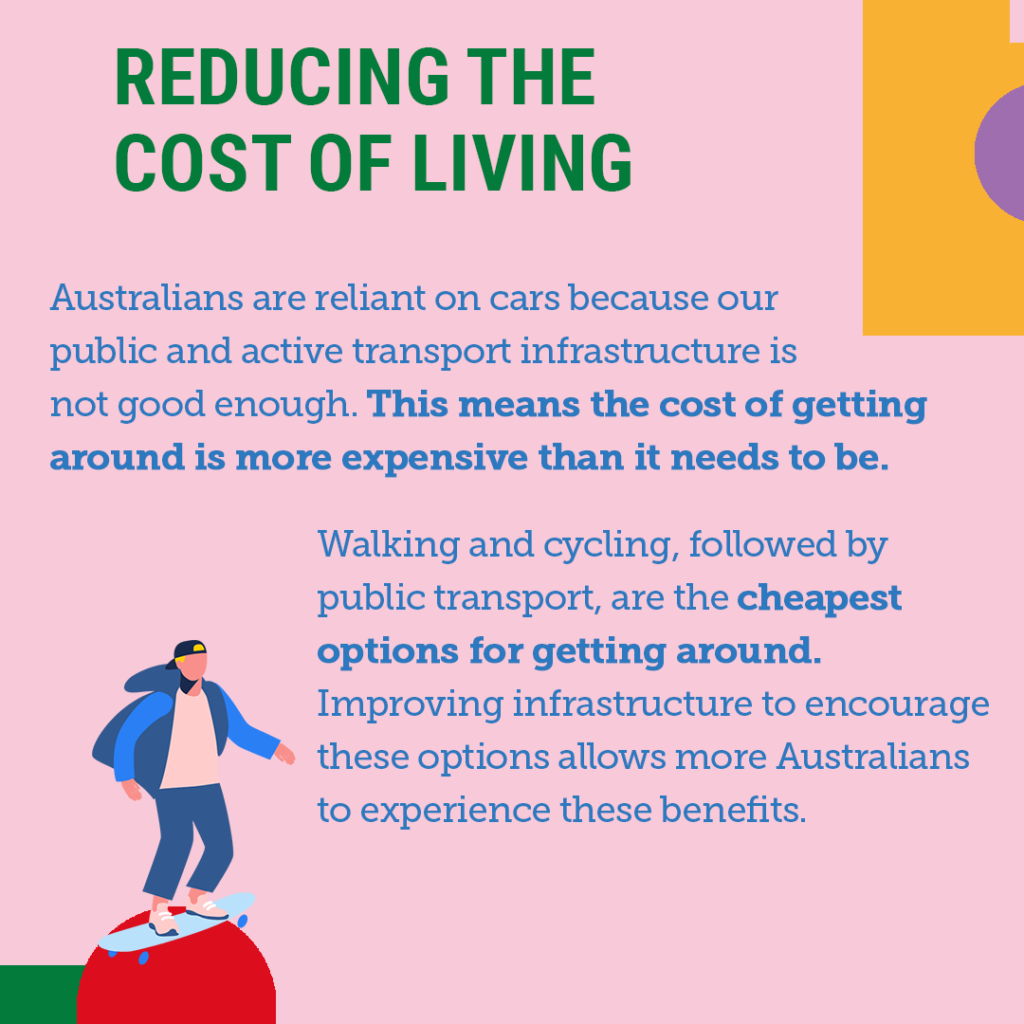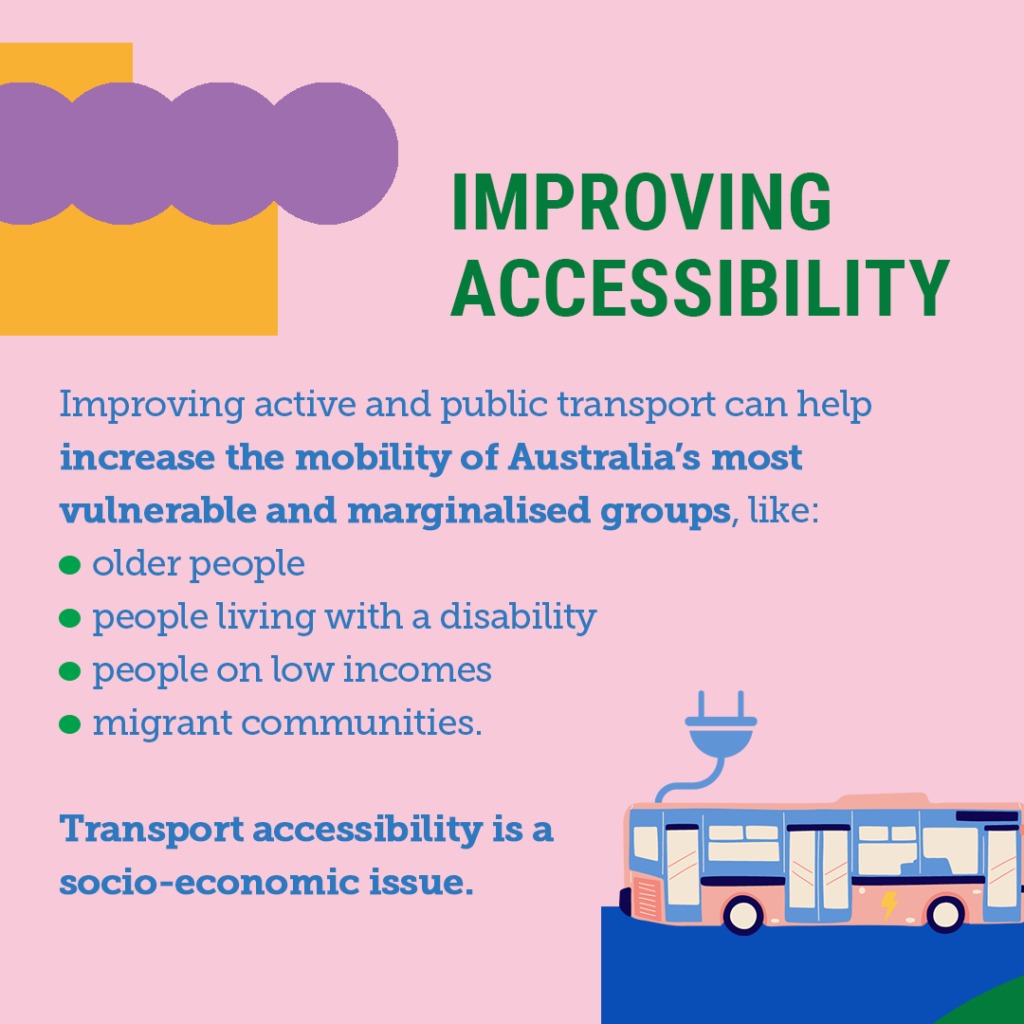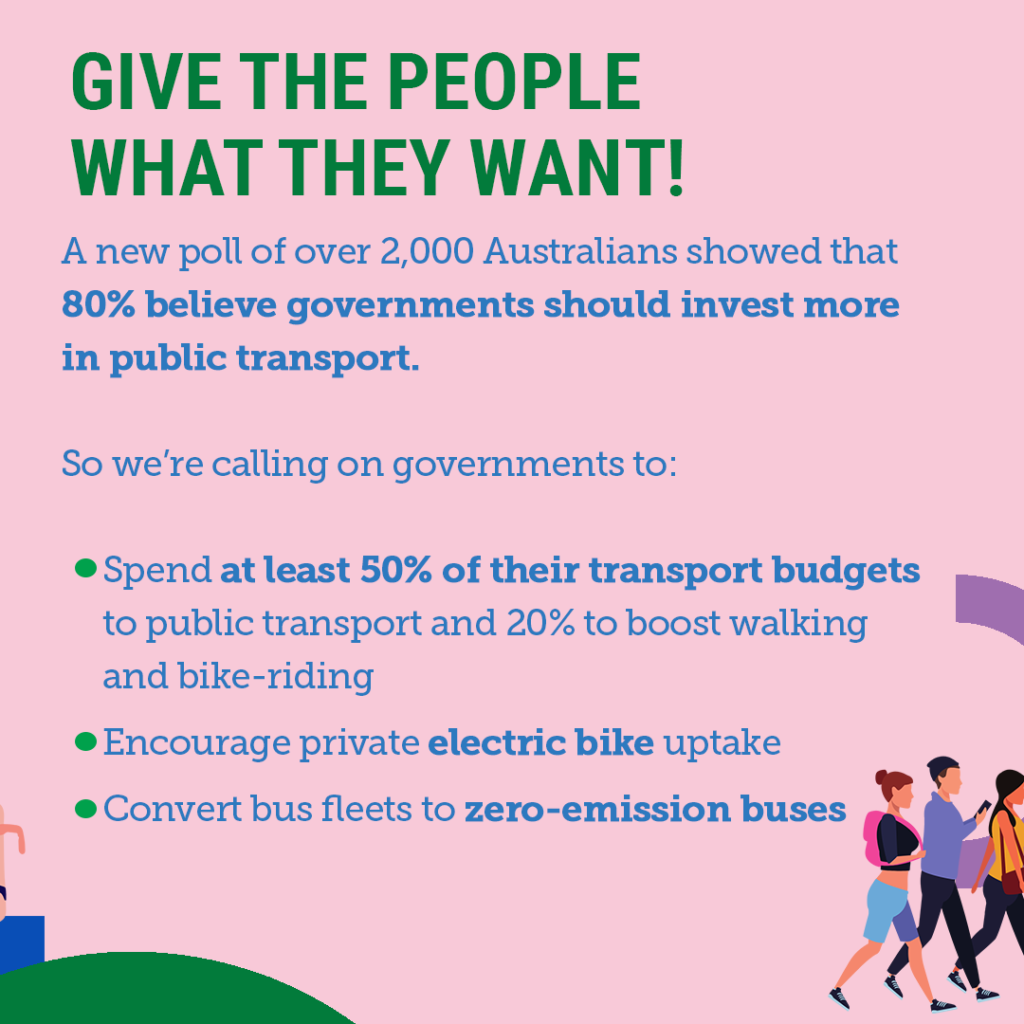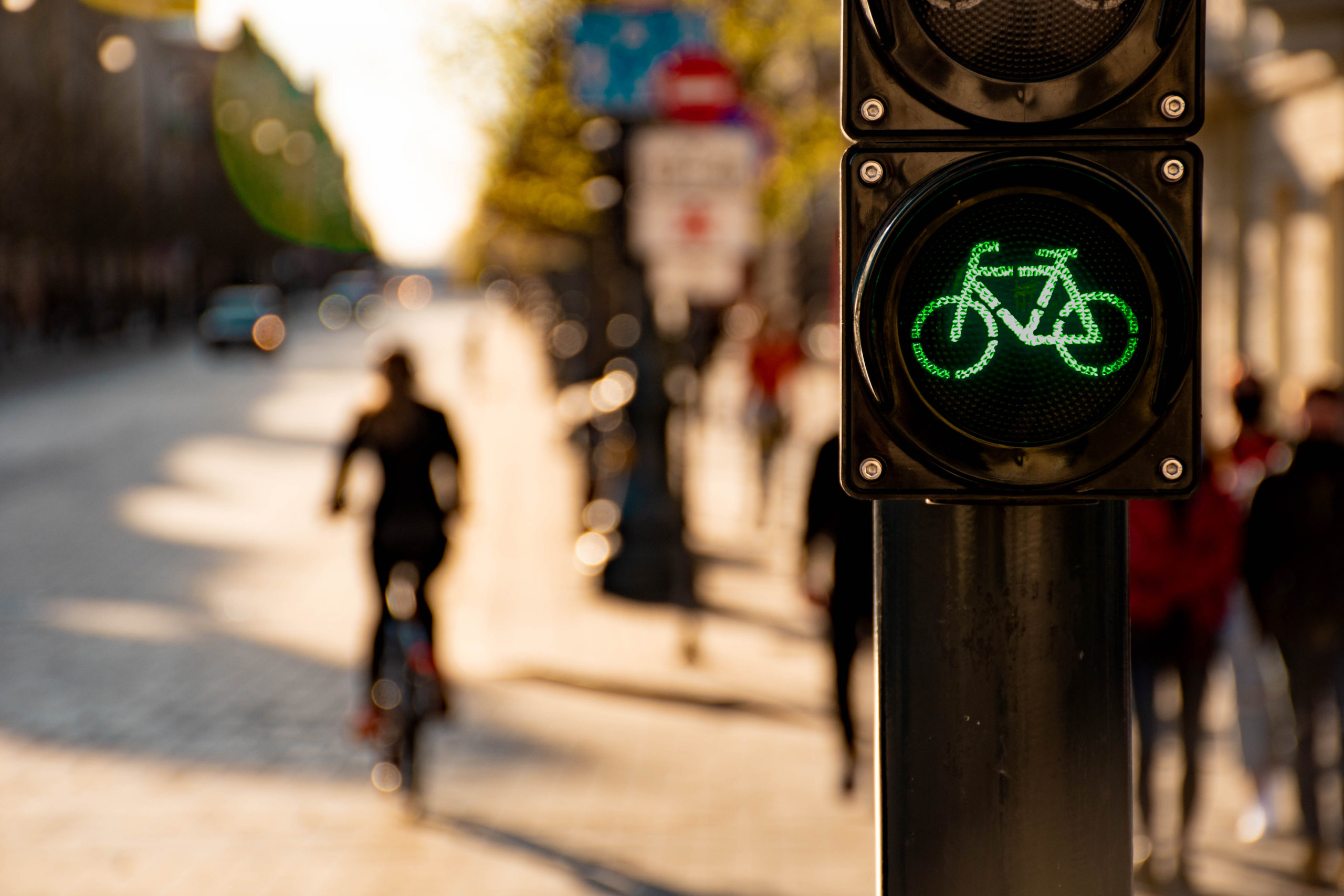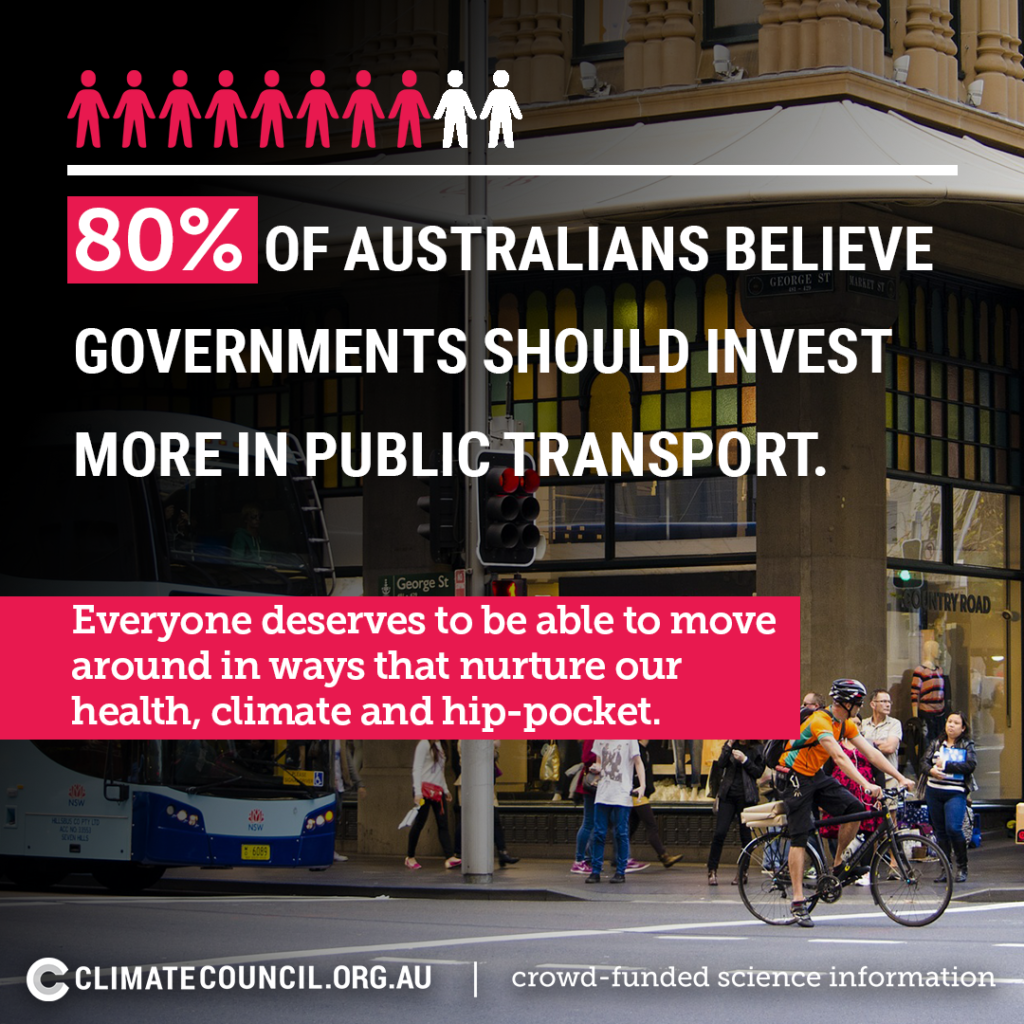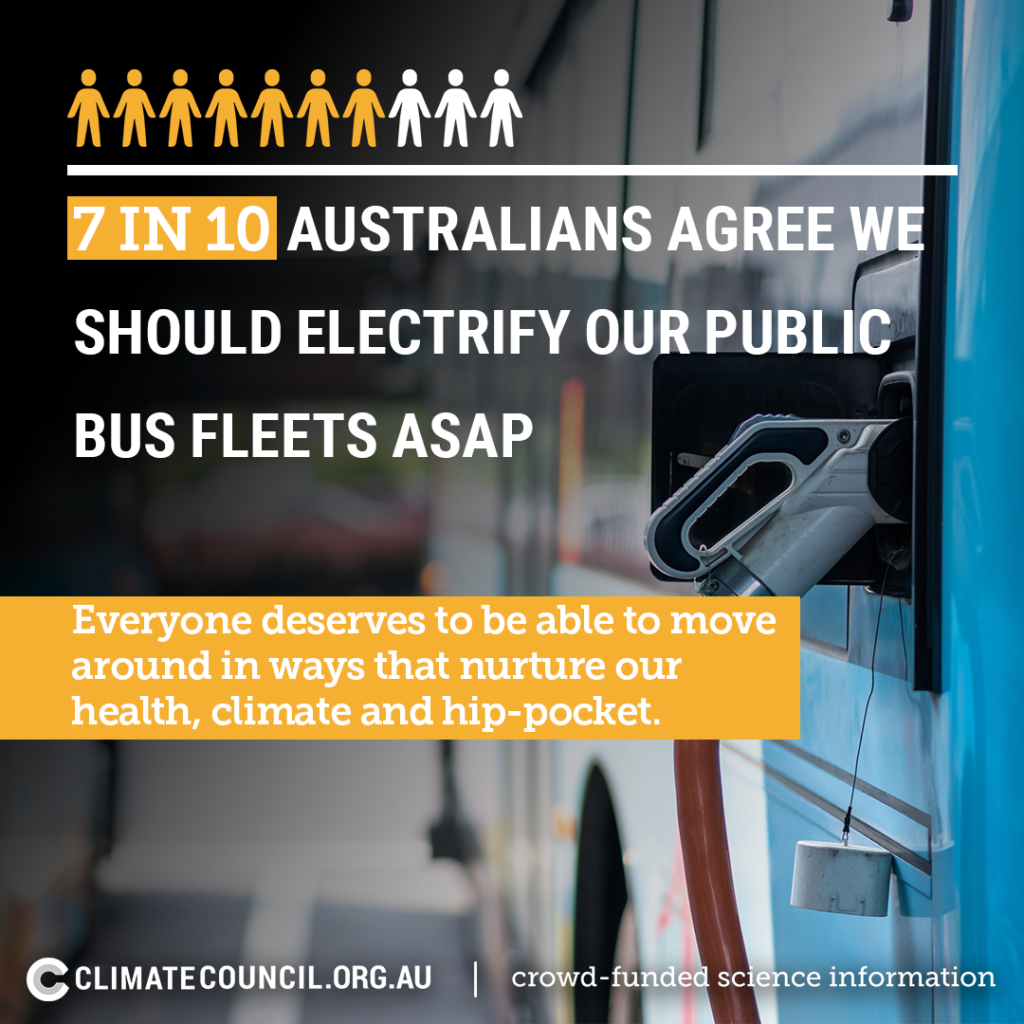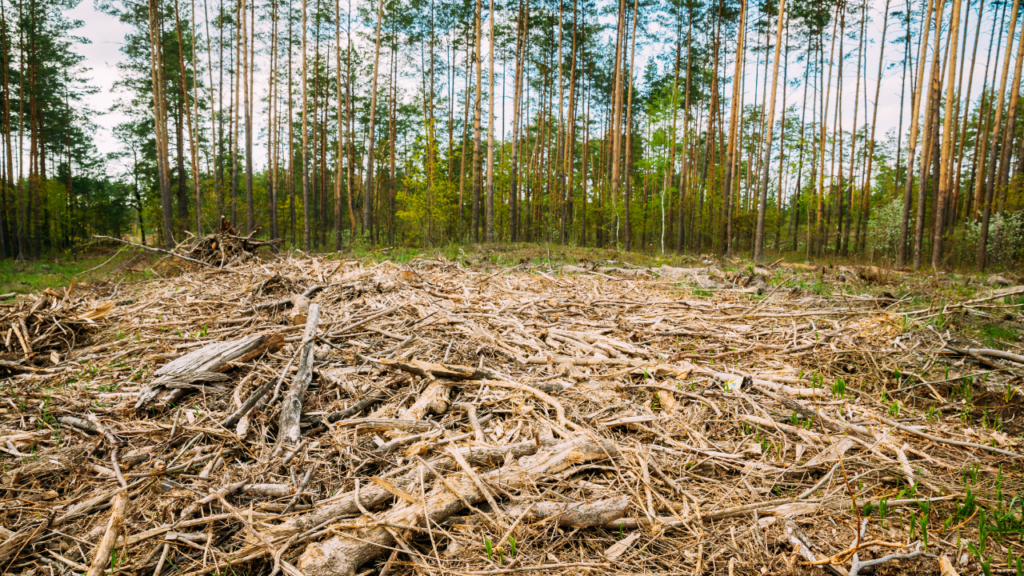Everyone deserves to move around in ways that nurture our health, climate and hip-pockets. Our governments’ lack of investment in public transport, bike lanes and footpaths means that transport is one of the fastest-growing sources of emissions in Australia and the third-highest source of greenhouse gases. Any way you look at it, Aussie cars are a major contributor to climate change.
Cars cause more than 60% of Australia’s transport pollution. Due to our lack of transport infrastructure we’re highly reliant on them for getting around. In fact, our per capita transport emissions are 45% higher than that of comparable countries. Australia also spends more on roads.
What Australians want:
The Climate Council partnered with YouGov to commission the People and Transport National Poll 2022; we asked more than 2100 Aussies what they think about Australian transport.
The People and Transport National Poll reveals that:
- Eight in 10 Australians believe governments should invest more in public transport
- Seven in 10 are keen to see Australia’s entire bus fleet electrified and run on renewables as soon as possible.
- More than two-thirds of Australians think governments should deliver more footpaths and bike lanes across the country.
The survey of Australian adults also found:
- When it comes to walking and/or riding a bike to get around, people would most like to see governments invest in building more dedicated bike lanes separated from car traffic (52%) and establishing more connected networks of footpaths and bike lanes (47%).
- Australian state governments currently allocate less than 2 per cent of their transport budgets to footpaths and bike lanes. In every state surveyed – Qld, NSW, Vic and SA – a majority (60%) of poll respondents believe this is not enough.
- Australians want transport options that are better for our hip pockets and climate, and investing in public transport and infrastructure for walking and bike-riding is much more popular than governments may realise. Petrol and diesel cars are expensive – especially at the moment. They cost a lot to buy, maintain and fill up at the pump, particularly now the price of fuel is going through the roof.
Did you know…?
Australians who commute to work using public transport can save over $8,000 a year compared with exclusively driving a car. For those who can bike or walk, the savings are close to $12,000.
How do electric vehicles (EVs) fit into all of this?
Cars and light commercial vehicles alone make up more than 60% of Australia’s transport pollution. This is largely thanks to our petrol-guzzling cars which produce up to 40% more carbon dioxide than their European counterparts, due to our dirty and inefficient fleet.
Have you heard of fuel efficiency standards? These standards provide incentives for car makers to supply low and zero emissions vehicles to a country – and penalise them for failing to do so. Rapidly implementing robust fuel efficiency standards will enable Australia to attract low and zero emissions vehicles rather than being a dumping ground for highly polluting guzzlers.
With a new Federal Government in charge, there’s a renewed opportunity to put strong fuel efficiency standards in place that will help us cut Australia’s emissions this decade and beyond.
The Climate Council is calling for Australian states and territories to:
- Allocate at least half of their transport budgets to public transport and 20 percent to initiatives that boost walking and bike-riding in line with best practice and the community’s needs.
- Encourage private electric bike uptake through discounts and government-funded try-before-you-buy programs.
- Convert state and territory bus fleets to clean, quiet and zero-emission buses.
Momentum is currently gathering to get more EVs onto Australia’s roads by introducing new Fuel Efficiency Standards. Together, these actions chart a clear course to decarbonising our transport fleet.
Check out our full transport policy recommendations here
“Australians know leaving the car at home can deliver cheaper commutes, healthier streets and reduced emissions for a cleaner environment. Now we need the investment to back up that choice so it’s easy and convenient for people to move around in cheaper, cleaner ways.”
Climate Council Head of Advocacy, Dr Jennifer Rayner.
Find out how to get a head start on making low emissions transport choices here.
